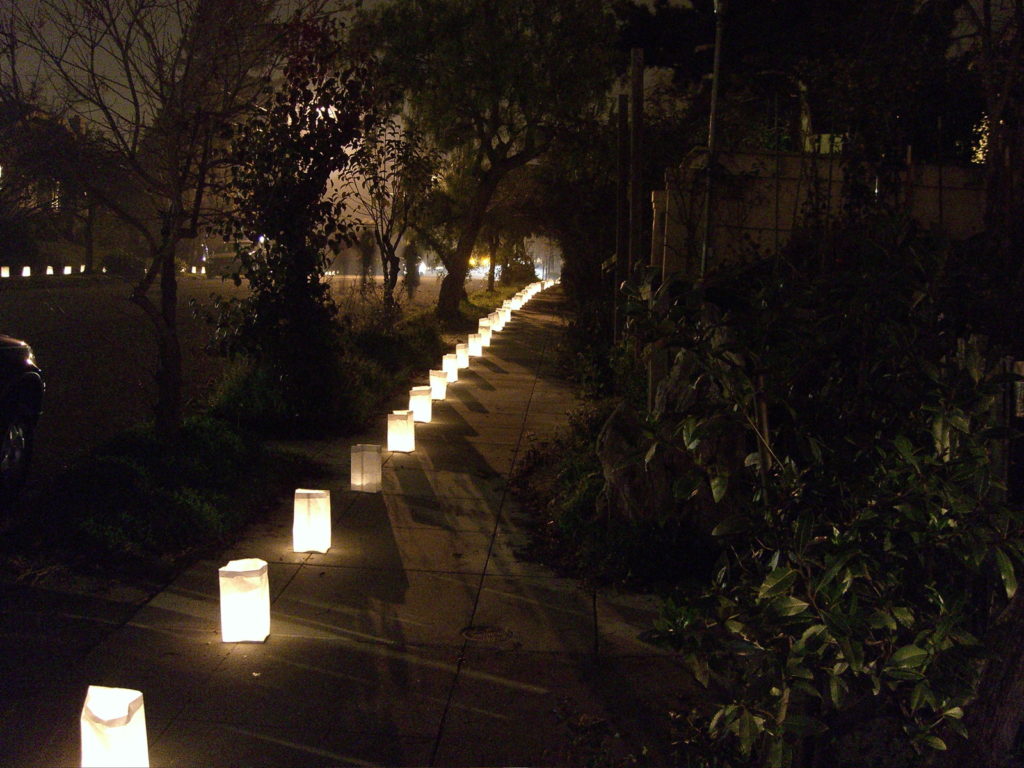

When you tell Bay Area acquaintances that you live in Berkeley, usually they’ll ask, “Where?” I sometimes feel it’s a way of trying to get an idea of where you’re standing on the socioeconomic ladder. If you say “the Hills,” that conjures pictures of secluded streets, sweeping views, and steep home prices. If you say “West Berkeley” or “South Berkeley,” that may convey a picture of a flatlands neighborhood that’s less white than the rest of the city, maybe more affected by street crime, maybe a place you can find what passes in these parts for affordable housing. “Elmwood” to me says genteel, tree-lined streets studded with big, beautiful old houses.
Our area is North Berkeley, a comfortable part of the city, if not a rich one. An area known for its proximity to the Gourmet Ghetto, a good-food neighborhood that’s actually been institutionalized. We’ve got one of the best produce markets in the country here, and every block sports at least one Prius or electric car at the curb. We’ve got decent schools and parks nearby. We’re close to public transportation, and this is one of the places where the unique and wonderful casual carpool started.
But those generalities don’t do much to show you the particulars of life in the neighborhood. You don’t pick up on the block parties, the parents cajoling kids to get into, or out of, the car, the neighborhood feuds, the badly parked cars, the influx and outflow of commuters every day, the hired gardeners and dog walkers, the clipboard-toting solicitors for political and social causes, the dogs barking at the postal carriers, the local dogs and cats and their tendencies, the FedEx and the UPS drivers, the new neighbors up the block, the discarded TVs or settees on the curb with signs that say “free,” or the lost cat posters and announcements for yoga classes on the telephone poles.
You also don’t encounter the occasional house that seems, apart from neighboring structures, to be sinking into ruin. Maybe we notice that more now that The Dog has us on regular rounds on nearby streets, but there’s one block in particular that stands out for having a couple of spectacular wrecks. One of the buildings appears to be a duplex–there are side-by-side entrances. A couple of the window panes have been replaced by plywood. There’s no sign of anyone going in and out, and the curtains appear to be permanently drawn. Right next door is a sprawling two-story house that also looks like it’s in a losing battle with weather and gravity. There’s a collection of junk and old boxes on the porch and a big liquidambar tree in the front yard; right now, weedy spring growth is emerging from an autumnal carpet of dead leaves. I’ve seen someone at this place–a woman who on occasion suns herself on a green plastic chair in a clear patch of driveway. She barked at me once two or three years ago for walking the dog off-leash. Occasionally, there’s a battered early-’70s Chevy Impala parked on the curb. Evidently it’s a live-in vehicle, and you’lI see it cruising the area (top speed about 20 mph).
The overall effect: a sort of Berkeley-ized version of Miss Havisham’s place in “Great Expectations.” You wonder whether there’s someone just barely hanging on to these places.
Not all is ruin, though. Outside that first house, a couple of shrubs are flowering right now (the pictures up above). The one on the left is a kind of magnola. The one on the right I’m not sure about. Below is the second house mentioned above.

Like this:
Like Loading...


